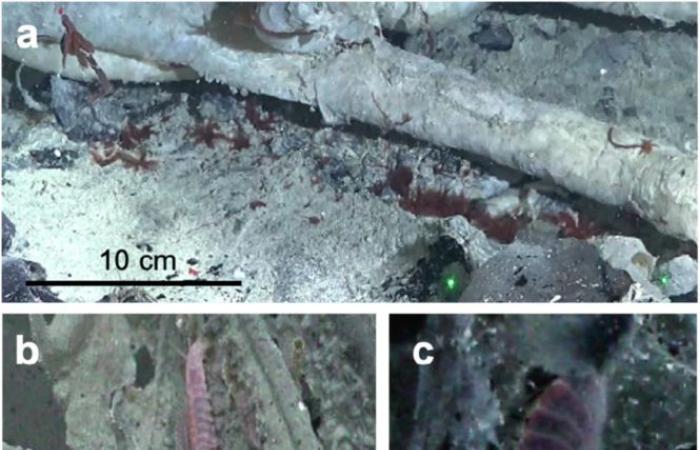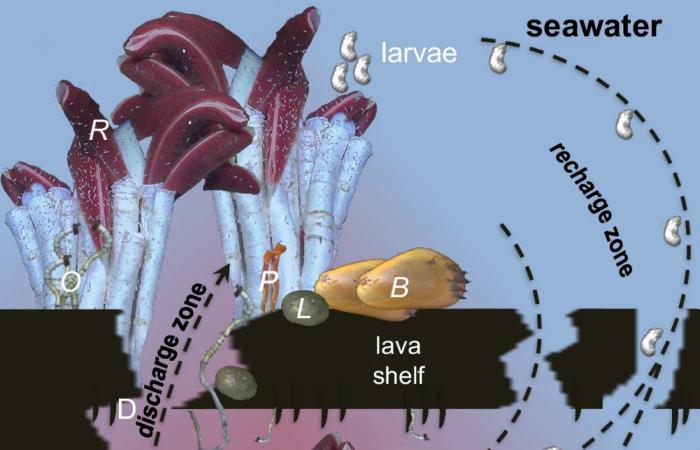Giant creatures live beneath the surface of the oceans. Their discovery changes our perception of underwater life.
At a depth of more than 2,500 meters, scientists have revealed a universe teeming with animal life beneath the ocean crust. These are cavities filled with hydrothermal fluids, surrounded by giant worms that can reach three meters in length.
b) Nereis sandersi on the roof of the cavity.
c) Branchinotogluma spp. observed during diving.
d) Semi-sessile Neomphalus fretterae observed during diving.
e) Lepetodrilus spp. on the roof of the cavity.
These geological structures, called hydrothermal vents, create favorable conditions for the development of these creatures. This phenomenon, already observed for microorganisms, had never before been observed for larger animals. Researchers from the Schmidt Ocean Institute, aboard the ship research Falkor, used submersibles to explore the Pacific seabed. They discovered a varied fauna, composed of gastropods, cephalopods, and other molluscs previously unknown at this depth.
Scientists also observed larvae in these cavities, suggesting that young specimens could colonize this environment through fluids from hydrothermal vents. This suggests that these ecosystems are interconnected with those on the ocean floor.
These discoveries revolutionize the understanding of underwater dynamics and suggest that large portions of the ocean crust could be home to complex life forms. The question of protecting these unique ecosystems from threats of mining now arises.
– The ceiling of the cavities may have drops of lava (D).
– Cracks appear in different places on the lava plates.
– In the recharge zone, cold seawater enters the shallow crust through cracks and mixes with the fluid hot hydrothermal, then evacuated through the cracks of the lava plates.
– The tubeworms Riftia pachyptila (R) and Oasisia alvinae (O) release fertilized eggs which develop into trochophore larvae in the water column before settling in the subsoil cavity system.
– Mobile animals, such as Paralvinella (P) and Lepetodrilus (L), pass through the circulation system as larvae or migrate through fissures in the lobed lava.
– Certain species, such as Bathymodiolus thermophilus mussels (B), colonize the vent mouths on the surface, but have not been observed in the subsoil.
Scale: thickness of lava plates ~10 cm, cavities ~5 to ~15 cm high. The cavities can extend over several layers of lava.
The extent of this underground habitat, however, remains to be defined. Some scientists suggest that life could extend much further, but conditions become more and more extreme the deeper you go into the crust.







